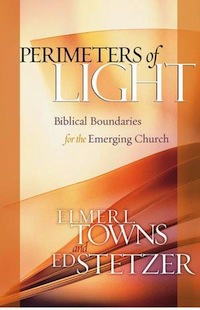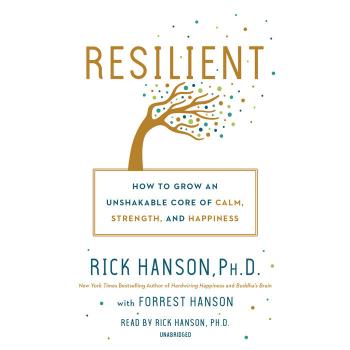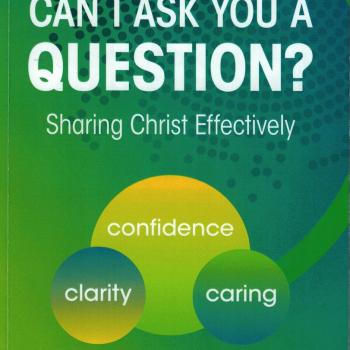Perimeters of Light by Elmer Towns and Ed Stetzer
The core thought of this book, Perimeters of Light: Biblical Boundaries for the Emerging Church by Elmer Towns and Ed Stetzer, is that a Christian should live at the perimeter between the church and the world. The authors make the distinction between boundaries, the perimeter of those boundaries, and where one person could determine the edge of those boundaries. What is inside the boundaries define a Christian. The question that the authors address is “Where is the edge?” (28, 35).
The authors make a distinction between the edge of error (doctrinal purity) and the edge of culture. Christians should not go near the edge of error, but Christians should step up to the edge of the culture without going too far (31).
The edge of culture is difficult to walk because if one goes too far on one side, we lose our influence. If we steer too far to the other side, we lose our relevance. Contextualization seems to be the key. The best a church can do is to stay faithful to the message, but place the message a context in which the culture will accept and understand.
The authors address contextualization with a scale (57). They suggest that church plants in North America should be indigenous (or native). In essence, pastors and church planters should address North America in the same way we address international missions (57).
The book ends by identifying a list of five perimeters of Christianity: (1) Jesus, (2) the Gospel, (3) Bible doctrine, (4) Christian experience, and (5) God’s blessing. These five “edges” form the boundaries of Christianity. Perhaps the entire book could be summarized with the following quote: “the indigenous church should be contextualized, but not compromised” (59). The authors apply the boundary or perimeter metaphor to the nature of the church, worship, music, preaching, and evangelism. This metaphor seems consistent and it is biblical. The hermeneutical lense through which the writers use seems to be the truth in Jesus’ statement that the church should be “in the world, but not of the world” (John 17).
The authors suggest an appropriate way to contextualize the message of Jesus Christ. They suggest the church should find the (1) meaning, then the (2) cultural form, the (3) Christian redeemed form which brings (4) glory to God. In essence, any cultural form which has meaning can be redeemed for God’s glory. In other words, the church can use the cultural form as long as it brings God His glory (44, 105). As a result, the church can use various styles of music (98-106), various forms of preaching (125), and various forms and processes of evangelism (139-148).
The brief explanation about the post-modern culture, especially the definition of post-modernism (159), helps put these issues into the right context. However, the authors spent far too much time explaining the metaphor of the boundaries, perimeters and edges. At the end of the book they finally defined the edge of Christianity. The cultural forms which they suggest can be used in the church seems to be based upon a subjective basis (the culture). The authors suggest that as long as the truth of Jesus Christ is still shared with the culture, and is not omitted, then the cultural form can be used in its redeemed form. While I would agree with this assessment, experience has proven to me that culture seems to influence the church more than the church has influenced the culture.
This book goes along with many books on church planting by addressing the underlying philosophical challenge that all churches in North America will face: post-modernism. It is not just that we have to contextualize to North Americans (whether they are bikers, cowboys, nerds, or yuppies). The philosophical basis of the new cultures needs to be addressed in our church. The authors suggest that the church should not ignore, attack, nor adopt the post-modern culture. Instead, we should present the true church (162) up to the edge of the post-modern culture. As such, this book is a welcome addition that can help many pastors and church planters in their work in this new post-modern world.













